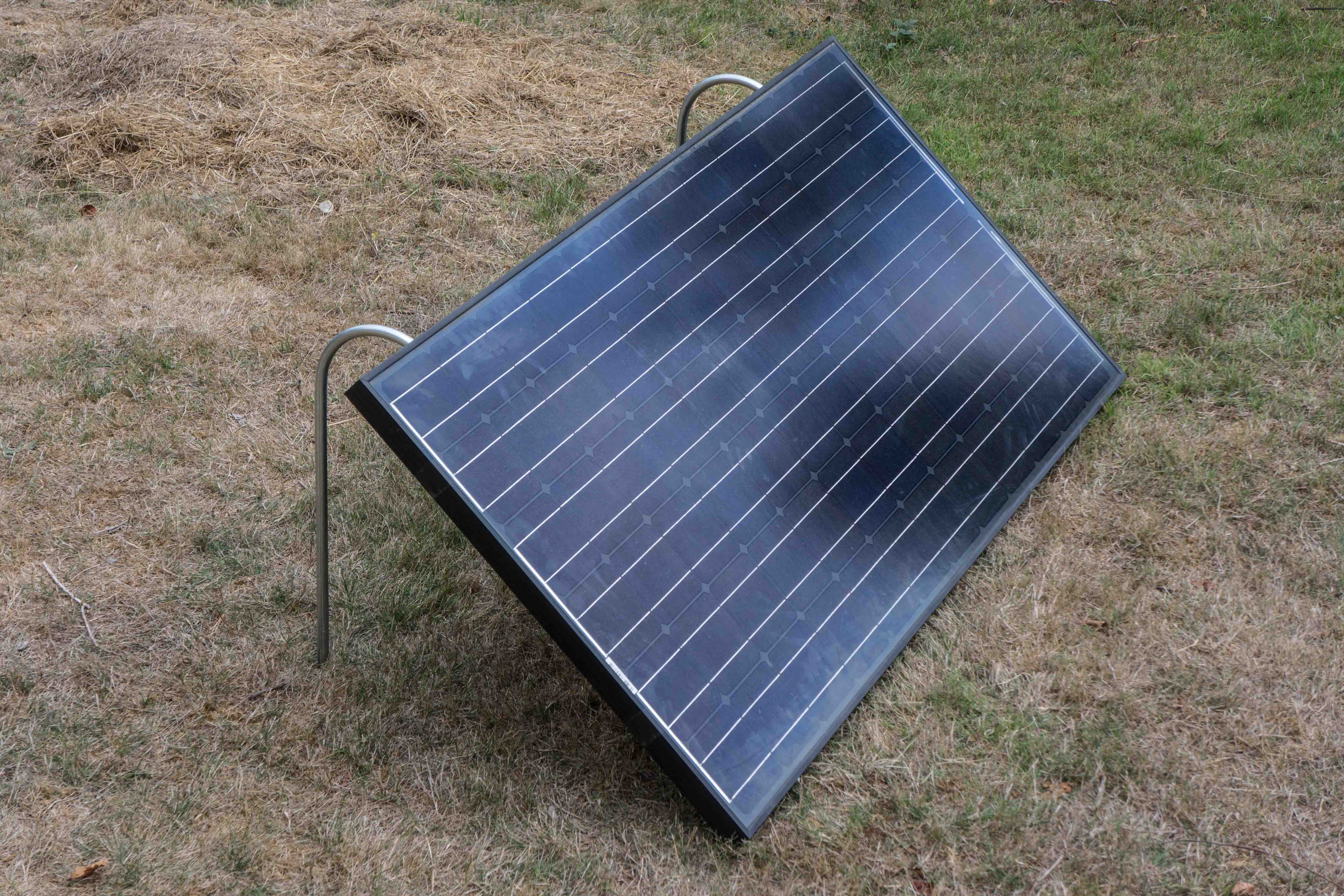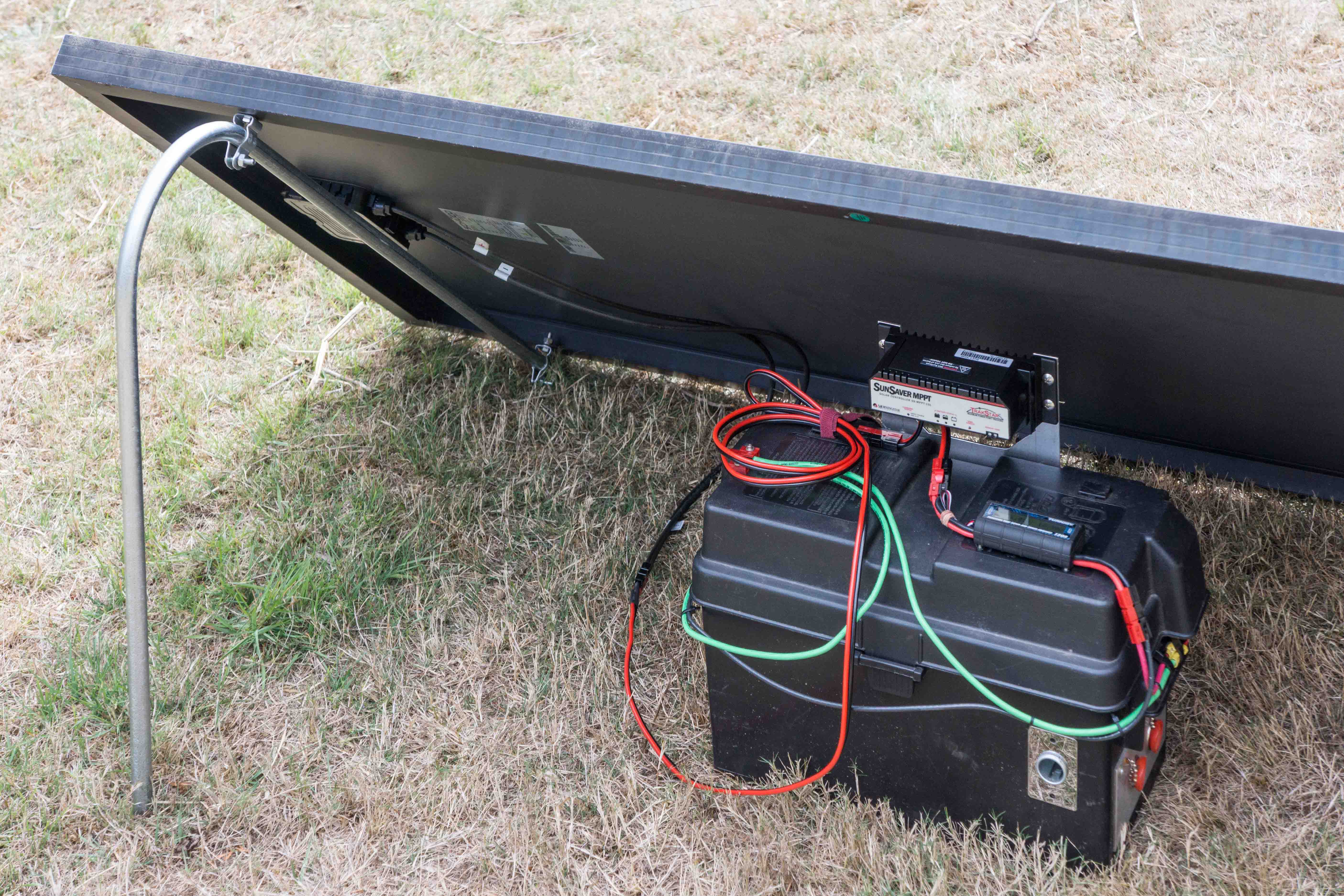Solar Panel
Printed From: R-pod Owners Forum
Category: R-pod Discussion Forums
Forum Name: Podmods, Maintenance, Tips and Tricks
Forum Discription: Ask maintenance questions, share your podmods (modifications) and helpful tips
URL: http://www.rpod-owners.com/forum_posts.asp?TID=7961
Printed Date: 23 Jun 2025 at 6:45am
Software Version: Web Wiz Forums 9.64 - http://www.webwizforums.com
Topic: Solar Panel
Posted By: frankie
Subject: Solar Panel
Date Posted: 17 May 2016 at 1:46pm
|
We were wondering if the Solar Panel is worth the extra $. We have a new 179 and did not purchase the panel, but are thinking about it. How does it work for those that have used it? Thanks New R-pod owner ------------- FrankieP |
Replies:
Posted By: furpod
Date Posted: 17 May 2016 at 5:07pm
|
Will you camp off grid? will you be out for more then 3-5 days? Will you need a/c or the microwave while camping of grid?
------------- |
Posted By: frankie
Date Posted: 17 May 2016 at 6:33pm
|
We will camp off-grid at times, tho probably not a lot. We really don't want to buy a generator and thought the solar panel would be much more environmentally friendly. ------------- FrankieP |
Posted By: JandL
Date Posted: 17 May 2016 at 7:13pm
|
A single 100 watt panel does a very good job of charging up your battery. Here is the link to my solar installation. I will have to update it because I have two 100 watt panels now. I got my second panel for $100. A solar panel is a lot lighter than a generator and quite, but you do need access to the sun
http://www.rpod-owners.com/forum_posts.asp?TID=842&PN=39&title=list-your-mods ------------- JandL 2013 Honda Ridgeline 2012 177 2 Paynes in a Pod |
Posted By: techntrek
Date Posted: 17 May 2016 at 10:12pm
|
Will you camp in the shade? Solar can't be even a little bit shaded. If you will be off-grid occasionally for a weekend each time, you'll be fine with just your battery. Assuming you don't need A/C or the microwave. If you need them you have no choice but to use a generator, period. And you can only use a genset overnight at truck stops, Wal-marts, and very remote campsites in the West. ------------- Doug ~ '10 171 (2009-2015) ~ 2008 Salem ~ http://www.rpod-owners.com/forum_posts.asp?TID=1723 - Pod instruction manual 
|
Posted By: sailor323
Date Posted: 17 May 2016 at 10:53pm
|
I am a very big believer in solar power. Yes, initial installation is a bit more expensive than a generator, but it is silent. Sure, it doesn't do well in the shade and several cloudy days in a row can be a problem. However, energy needs on the Pod are very minimal. We have 2 140 watt panels (probably overkill) and 2 6v golf cart batteries for storage. You can find info on our installation at https://www.facebook.com/groups/56931970807/files/ . We boondock a lot and have never had a problem. granted, we can't use the A/C or the oven, but we're "camping" right? |
Posted By: JandL
Date Posted: 17 May 2016 at 11:15pm
|
In the 2 years I have camped in my trailer the only places I had a shade problem is in the Redwood and at Big Sur. If I had not made advanced reservation for a camp site I could have found ones that had some sun for part of the day. ------------- JandL 2013 Honda Ridgeline 2012 177 2 Paynes in a Pod |
Posted By: frankie
Date Posted: 17 May 2016 at 11:31pm
|
Thanks everyone for the prompt responses regarding the solar panel. Much to think about. We are from Minnesota so even though it gets cold here, we do get a fair amount of sun. If anyone gets to MN check out Grand Marais. There is a great campground by the town and many of the campsites are on or have views of Lake Superior. Sweet little town, nice campground. ------------- FrankieP |
Posted By: Marco T
Date Posted: 17 May 2016 at 11:44pm
|
I picked up an 'open-box special' solar kit from Princess Auto a couple of months ago for $187 (regular $350+) and I've been plugging it into my 176t every few weeks to top up the battery when it hits 10.5V-11V. I am very pleased with my purchase. It doesn't have the best solar charge controller, but it does OK. The best thing about it is it's four 18W panels and they are only a foot wide so they fit nicely into the pass-through storage. The system charges my group 24 battery to the top level in an afternoon if it's sunny. I picked up two larger reconditioned sealed batteries (TEL12-90 - 12 volt 88Ah - VRLA Battery series for Telecom Power Applications) today - they are 4 years into a 10 year lifecycle but I only paid $80 each. I had to get creative mounting both batteries since they fit in group 27 battery boxes, but they are on there solidly. In hindsight I could have mounted them on end, but the boxes wouldn't protect the batteries as well. Either way, I'm going from 64Ah to 176Ah, which I don't see us stressing this year with any of our planned trips. I'm not too worried about shade, I have some flexibility on where I mount the panels so I should be able to find sun most places we go. First test run this weekend up to the family cabin! Tonight was de-winterize the rpod night - my first time. Everything looks good so far! ------------- The Tri-podders 2011 Dodge Durango Citadel - 5.7L Hemi 2015 R-pod 176T |
Posted By: Podster
Date Posted: 17 May 2016 at 11:56pm
|
Think of solar panel(s) as slow battery chargers that only work if it is sunny. ------------- Cliff & Raelynn Ranger 4.0/178 (1/2 ton 5,800lb tow capacity) |
Posted By: Rustler
Date Posted: 22 May 2016 at 2:58am
Hi Frankie, I too am a new Rpod owner. Solar panels are a good way to go, though expensive. In the long run they are less expensive and less hassle than generators, etc. I find the solar systems offered for the Rpods to be over-priced. I looked at one yesterday at a local RV dealer where a 200 watt ZAMP model with PWM controller in nice fold up carrying case cost around $1000. You can buy two 100 watt modules from Amazon for around $300. A controller can be maybe $100 for a PWM (pulse width modulation). The better MPPT (maximum power point tracking) controllers are maybe twice that. But you are still looking at less than $600. The MPPT controllers will harvest more solar energy than the PWM versions. Since solar power is expensive, you want to maximize the payback by getting the better charge controller. The extra cost here is worth it in the long run. The Zamp solar kit offered with the Rpods has the cheaper PWM controllers built in behind the panels. Still the kit is a nice plug-in upgrade. But you can do better and cheaper assembling your own system. I have a spare 185 watt panel, identical to the other 25 panels on my home solar system. I purchased a Morningstar MPPT controller for a bit over $200. The combination puts out around 12 amps at maximum power point. The controller is a 4-stage battery charger, programmable for all types of batteries. I made a simple metal conduit brace to tilt the solar panel board the sun. The Zamp kit's advantage is being a complete package, ready to stow in your Rpod and plug in at your camp site. My panel will ride on the queen mattress during travel. It will require a bit of setup at the camp site. I would suggest securely anchoring any solar panels against unforeseen winds. I had my panel tied down to a big concrete block in my yard. The next morning a strong wind had flipped the solar panel face down on the lawn with the concrete block at the end of the tie-down rope just beyond the panel. Now I use a screw-in anchor that is used for tethering pets as my tie-down point. Here's a couple of photos of my solar charging setup:
The next photo shows the simple metal conduit brace to angle the panel toward the Sun:
The above photo also shows the Morningstar MPPT charge controller installed on a portable deep-cycle battery. So if you don't mind the extra work to fashion your own solar charger, you can save a bit of money. But whether using the commercial Zamp kit or your own home-brew setup, the solar charging system can give a bit more freedom for off-grid, dry camping. ------------- Russ 2009 Toyota RAV4 V6 w/ tow package 2016 Rpod 171 HRE |
Posted By: frankie
Date Posted: 22 May 2016 at 9:15am
|
Thanks for all the info! Very informative! ------------- FrankieP |
Posted By: sailor323
Date Posted: 22 May 2016 at 4:17pm
|
I am a big believer in solar power. I installed 2 140 watt panels on the roof of our 179. Much cheaper than the Zamp alternative. You can find a detailed description along with photos in the files section of the r-pod owners facebook page https://www.facebook.com/groups/56931970807/files/ https://lookaside.fbsbx.com/file/How%20To%20-%20Installation%20-%20Solar%20Panels%20on%20Roof.pdf?token=AWwZ9AUwfmZ4BkLStmq9BnpJAcxEPKmLX2EhwfJxTUmzFNhAOCeRs6dXaZdIEittCu4TxgyIuOW_-dbOWgmb-GW4M6Tosub17FncBS0nG9Xrb_uUl7bzWtxCyVcSQbmzfmtJA_L7_DxexHfJky5jkEAjbjcU5_YKYKNGYitUPs5baw - - How To - Installation - Solar Panels on Roof.pdf The electrical needs of the pod are relatively small and my installation is probably a bit of overkill, even for several days of boondocking. |

